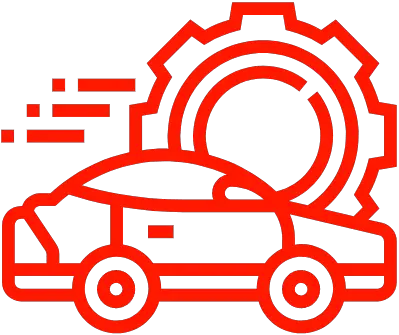Why Does My Engine Still Keep Running After I Turn It Off?
There’s nothing quite as unsettling as turning off your car’s ignition only to find the engine still running. This unexpected phenomenon, often referred to as “engine run-on” or “dieseling,” can leave drivers puzzled and concerned about what’s going wrong under the hood. Understanding why your engine continues to run after you’ve turned off the key is crucial—not only for your peace of mind but also for the health and safety of your vehicle.
When an engine keeps running after shutdown, it signals that something in the system is causing combustion to continue without the spark from the ignition. While this issue might seem alarming, it’s more common than you might think and can stem from a variety of mechanical or electrical factors. Whether it’s related to fuel delivery, ignition components, or engine temperature, pinpointing the root cause is essential for preventing potential damage and ensuring your car operates smoothly.
In the following sections, we’ll explore the reasons behind an engine that won’t stop running, what risks this condition poses, and the steps you can take to diagnose and address the problem. By gaining a clearer understanding of this issue, you’ll be better equipped to maintain your vehicle’s performance and avoid costly repairs down the road.
Common Causes of an Engine That Continues Running After Shutdown
One of the primary reasons an engine continues to run after the ignition is turned off is a phenomenon known as engine run-on or dieseling. This occurs when the engine continues to combust fuel even without spark plug ignition. Several mechanical and electrical issues can contribute to this problem.
A frequent cause is carbon buildup within the combustion chamber. Over time, carbon deposits can create hot spots that ignite the fuel-air mixture prematurely, causing the engine to run on even after the ignition is turned off. This effect is more prominent in older vehicles or those with prolonged poor maintenance.
Another cause is a malfunctioning ignition switch. If the ignition switch fails to completely cut power to the ignition system or fuel injectors, the engine may continue to operate. Similarly, electrical faults such as a short circuit or stuck relay can maintain power flow, resulting in continued engine operation.
Fuel system problems can also lead to engine run-on. For example, a stuck fuel injector can continue delivering fuel into the combustion chamber after shutdown, sustaining combustion. Additionally, issues with the carburetor or fuel pressure regulator may cause fuel to flow uncontrolled, fueling the engine post-shutdown.
Vacuum leaks or issues with the idle control valve can cause the engine to run at higher RPMs than normal, increasing the likelihood of run-on. Furthermore, malfunctioning sensors, such as the throttle position sensor or engine coolant temperature sensor, can send incorrect signals to the engine control unit (ECU), affecting shutdown procedures.
Troubleshooting Steps for Diagnosing Engine Run-On
Diagnosing why an engine continues running after being turned off requires a systematic approach to isolate the root cause. The following steps are recommended for effective troubleshooting:
- Inspect the ignition switch: Verify the ignition switch completely cuts power when turned off. Test for continuity and check for signs of wear or damage.
- Check for carbon buildup: Perform a combustion chamber inspection. Excessive carbon deposits may require cleaning or decarbonizing.
- Test fuel injectors: Ensure injectors close properly and do not leak fuel when the engine is off.
- Examine the fuel pressure regulator: Confirm it maintains proper fuel pressure and does not allow fuel to flow when the engine is off.
- Evaluate electrical relays and wiring: Look for stuck relays, shorts, or wiring faults that may maintain power to the ignition or fuel system.
- Assess idle control system: Check the idle air control valve and vacuum lines for leaks or malfunctions.
- Scan for sensor errors: Use an OBD-II scanner to detect sensor faults that might affect engine shutdown.
Impact of Engine Run-On on Vehicle Performance and Safety
An engine that continues running after shutdown poses several risks and affects vehicle performance negatively. From a safety perspective, unintended engine operation can lead to:
- Increased risk of fire or overheating, especially if the vehicle is parked in enclosed spaces.
- Potential damage to the ignition system or starter motor due to repeated attempts to restart a running engine.
- Excessive fuel consumption and emissions, contributing to environmental harm.
- Premature wear of engine components due to abnormal operating conditions.
Additionally, engine run-on can cause inconvenience and potential legal issues if the vehicle emits excessive noise or fumes while parked.
Comparison of Causes and Effects of Engine Run-On
| Cause | Description | Effect on Engine | Recommended Action |
|---|---|---|---|
| Carbon Buildup | Hot carbon deposits ignite fuel-air mixture post ignition off | Continued combustion; engine runs on | Combustion chamber cleaning; use of fuel additives |
| Faulty Ignition Switch | Switch fails to fully cut power to ignition system | Ignition system remains active; engine continues running | Ignition switch repair or replacement |
| Stuck Fuel Injector | Injector leaks fuel even when engine is off | Fuel continues to feed combustion; engine runs on | Injector cleaning or replacement |
| Electrical Relay Fault | Relay stuck closed, maintaining circuit | Power supplied to ignition or fuel system post shutdown | Relay testing and replacement |
| Vacuum Leak | Uncontrolled air flow affecting idle speed | Engine idles high, increasing run-on risk | Repair vacuum lines; check idle control valve |
Common Causes of an Engine Continuing to Run After Being Turned Off
When an engine continues to run after the ignition key is turned off, it is often referred to as “dieseling” or engine run-on. This phenomenon can be caused by various mechanical or electrical issues that prevent the engine from shutting down properly. Understanding these causes can help diagnose and resolve the problem efficiently.
- Carbon Deposits in the Combustion Chamber: Excessive carbon buildup can cause hot spots that ignite the air-fuel mixture even after the spark is cut off, leading to continued engine running.
- Faulty Ignition Switch: A malfunctioning ignition switch may fail to cut power to the ignition system and fuel injectors, causing the engine to keep running.
- Vacuum Leaks: Uncontrolled air entering the intake manifold can disrupt the fuel-air ratio, causing the engine to continue running.
- Fuel Injection Issues: Leaking fuel injectors or a faulty fuel pressure regulator can supply fuel even after the engine is turned off, sustaining combustion.
- Glow Plug or Intake Heater Malfunction (Diesel Engines): These components can cause combustion to continue unintentionally in diesel engines.
- Faulty Idle Control Valve or Throttle Body: If the idle air control system does not close properly, it can supply enough air to keep the engine running.
- Electrical System Malfunctions: Wiring issues or short circuits may keep the ignition system energized beyond shutdown.
- Aftermarket Modifications or Faulty Engine Control Unit (ECU): Improper tuning or ECU malfunctions can cause prolonged engine operation post key-off.
Diagnostic Procedures to Identify the Underlying Issue
Accurately diagnosing why an engine continues running after being turned off requires systematic evaluation of several components and systems. The following diagnostic steps are recommended:
| Diagnostic Step | Procedure | Purpose |
|---|---|---|
| Inspect Ignition Switch | Use a multimeter to check if the ignition switch cuts power to the ignition coil and fuel system upon key removal. | Verify that electrical power is properly disconnected to stop engine operation. |
| Check for Carbon Buildup | Remove spark plugs and inspect for heavy carbon deposits; perform a combustion chamber cleaning if necessary. | Identify hot spots causing self-ignition after shutdown. |
| Test Fuel Injectors and Pressure Regulator | Measure fuel pressure with a gauge; inspect injectors for leaks or sticking. | Ensure fuel supply is cut off when the engine is off. |
| Evaluate Idle Air Control System | Check idle air control valve operation and throttle body cleanliness; test for proper closure on shutdown. | Confirm air intake is appropriately restricted to stop combustion. |
| Scan ECU for Fault Codes | Use an OBD-II scanner to detect any errors related to engine control or sensors. | Identify electronic faults or malfunctions affecting engine shutdown. |
| Inspect Electrical Wiring | Visually inspect and test wiring harnesses for shorts, corrosion, or damage. | Ensure proper electrical isolation of ignition and fuel systems. |
Preventative Measures and Repairs to Address Engine Run-On
Once the root cause has been identified, corrective action can be taken to prevent future occurrences of engine run-on. Recommended repairs and maintenance include:
- Clean Combustion Chambers: Perform decarbonization treatments using specialized solvents or professional cleaning to remove hot spots.
- Replace or Repair Ignition Switch: Install a new ignition switch if testing reveals failure to cut electrical power.
- Fix Fuel System Leaks: Replace faulty fuel injectors, seals, or pressure regulators to ensure fuel supply ceases upon shutdown.
- Service Idle Control Components: Clean or replace the idle air control valve and throttle body to maintain correct air intake control.
- Repair or Replace Wiring and Connectors: Address any electrical faults that might keep the ignition system energized.
- Update or Reflash ECU Software: If applicable, update engine control software to resolve potential logic errors causing run-on.
- Regular Maintenance: Adhere to manufacturer-recommended service intervals to minimize carbon buildup and mechanical wear.
Technical Explanation of Engine Run-On in Gasoline and Diesel Engines
Engine run-on occurs due to continued combustion after the ignition source is removed. The mechanism differs slightly between gasoline and diesel engines:
| Engine Type | Cause of Run-On | Technical Explanation |
|---|

